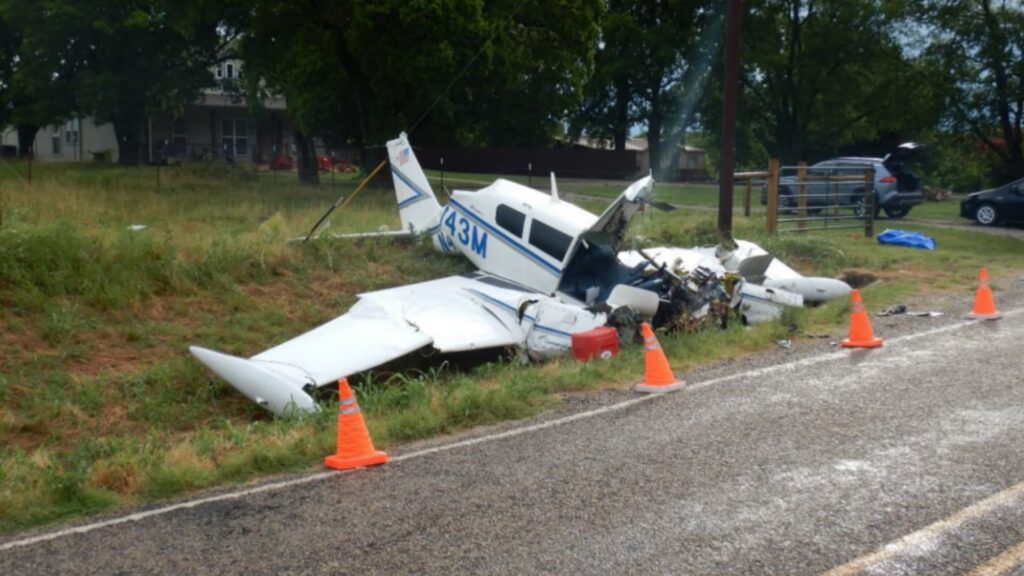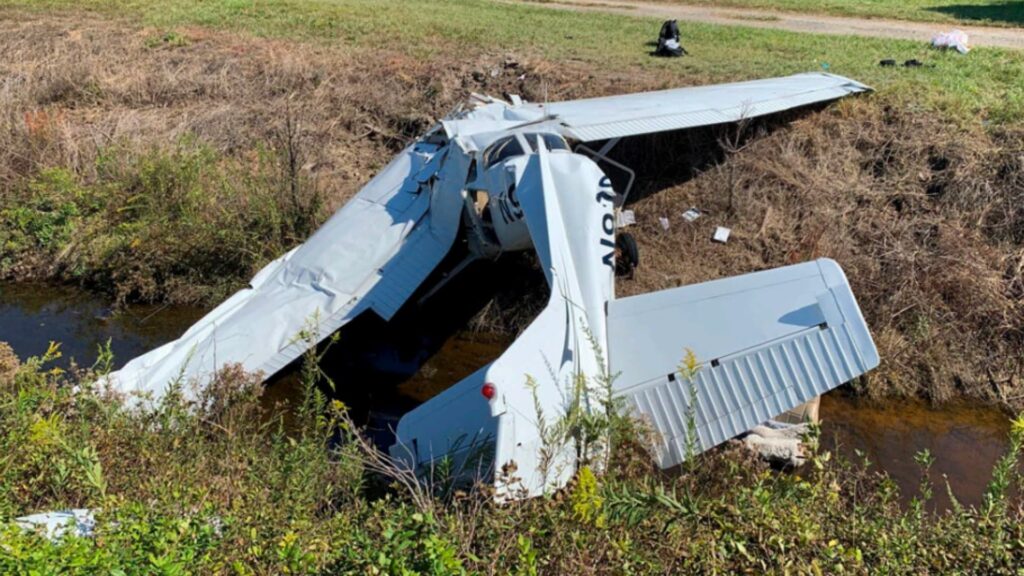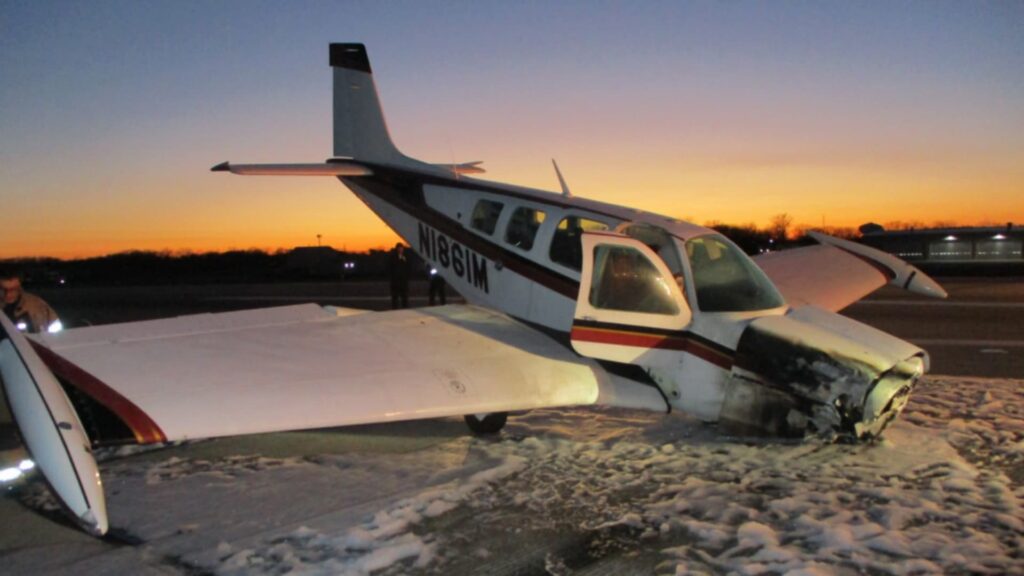If you’ve been around airshows long enough, you know the energy of a fast-jet demo. The pass is planned, the cadence is rehearsed, and the safety margins are baked in. On August 13, 2023, at Willow Run (YIP) in Michigan, a privately owned MiG-23UB lined up for its “banana pass”—a low-level, knife-edge display—when things started to unravel. What followed was a degrading power situation, an attempted recovery back toward the field, and a last-second ejection that left both crewmembers seriously injured and the jet destroyed near an apartment complex south of the runway.
Who Was Flying, And What Were Their Credentials?
This wasn’t a low-time crew. Up front, the owner—an airline transport pilot and former U.S. Naval Aviator—reported 21,296 total hours with about 14,000 as PIC and 42 hours in the MiG-23. He held multiple type ratings (Airbus A320; Boeing 757/767/777; L-39; MiG-23) and a current first-class medical. In back, the pilot-rated observer (PRO) was also an ATP and instructor, an active Air National Guard Lt. Col. with roughly 15,000 total hours and 12 in type, plus formal training on several ejection seat systems. These are deep résumés by any measure, but—critically—both had relatively low time in this specific make and model.
Set-Up For The Pass
The jet departed runway 23 at YIP using max power, selected minimum afterburner, then maximum afterburner, and deselected it turning downwind—normal choreography for the sequence. Approaching for the banana pass, the PRO commanded the wings to 45°. The PIC glanced down and noticed the airspeed was lower than expected, though still above minimum maneuvering. To build speed, he nudged the nose and advanced the throttle. Then came the key moment: throttle to the stop, afterburner paddle pulled… no surge of power. The PIC tried again—pull back to midrange, re-advance, attempt to light the ’burner—still nothing. Both pilots acknowledged an emergency.
Managing a Degrading Engine
From there, the cockpit flow split into two parallel tasks: fly the jet back toward the airport and diagnose the power problem. The PRO moved the wings forward to 16° to improve lift; the PIC focused on angle of attack to avoid a stall and aimed for a sparsely populated area just outside the airport boundary. He reported the engine was running above idle and producing some thrust, but not enough to hold airspeed and altitude. He delayed flaps initially for glide performance, later selecting takeoff flaps as the speed bled toward 190 knots. Throughout, the controls remained effective and the airplane did not stall.
In the troubleshooting stack, the PIC first activated the emergency nozzle control—no immediate change. He planned next to use the emergency engine control (bypassing the automatic fuel control), but before he could confirm that selection the ejection sequence fired. The PRO, who reported peak altitude around 900 feet AGL earlier in the turn and airspeed decaying below 200 knots, had been making airspeed callouts and assessing their glide path. With the trajectory trending to impact outside the perimeter, he cued ejection at about 350 feet AGL without hearing a response from the front seat. The PIC later said he had replied “no” to the ejection question and believed he still had options to reach a large field short of runway 27.
The Ejection—Late, But Likely Not Premature
The MiG-23UB in this configuration did not have “zero-zero” seats. The aircraft flight manual gives a simplified rule for descending ejections: minimum safe altitude is roughly five times the rate of descent (feet per minute). At an estimated 350 feet AGL, that only covers a 70 fpm descent—far less than you’d expect in a descending, turning jet with partial thrust. Videos showed parachutes fully inflating just above treetop height; both crewmembers splashed down in a nearby lake with serious injuries. The investigators concluded the timing was not premature; a higher ejection would likely have reduced injuries, and further delay could have been catastrophic.
Impact And Scene
Unpiloted, the MiG stayed in a left bank and descended into terrain about 1.7 miles south of the runway 27 threshold. The wreckage path ran roughly 600 feet, and the tail/engine section came to rest beside an apartment building where a post-impact fire followed. Remarkably, there were no injuries on the ground. Weather was VMC with about 10 miles of visibility and light northerly winds—no meteorological factor here.
What Failed—And Why It’s Hard To Know
The story many of us wanted answered right away—what actually failed?—didn’t yield a clean ending. The crew experienced a reported partial loss of engine power during maneuvering that could not be pinned to a single cause. Photographs and engine damage indicated the Tumansky R27F2M-300 was still producing some power at impact (blade damage and spinner scoring consistent with rotation), but how much power—and why it sagged—wasn’t determinable. There was no teardown, in part because there wasn’t a domestic shop with the tooling and expertise to open up this particular engine variant. Without that deep dive, the NTSB stuck with “undetermined” for the underlying mechanical driver.
It’s worth noting a relevant thread: the same aircraft had a power-loss event back in 2018. The owner replaced the fuel control unit (FCU), and the issue seemed resolved at the time. After this accident, the PIC speculated that both events could have involved the exhaust nozzle actuation system rather than the FCU. Another MiG-23-experienced pilot who flew the 2018 sortie described similarities between the two events and emphasized that these seats aren’t zero-zero, reinforcing how tight the timing was on ejection. But speculation is not determination; without a teardown, the chain stops short.
Crew Resource Management Under Pressure
The most human part of this mishap sits between two good pilots making different calls under compressing margins. From the front seat, the PIC believed there was still room to nurse the jet to a safer forced-landing area while he worked a last-ditch engine control option. From the back seat, the PRO—monitoring airspeed, descent path, and the lack of engine response after multiple throttle cycles—saw the out-of-bounds impact line forming and chose to pull the handle. Neither perspective was unreasonable in isolation; the tragedy is the seconds available didn’t allow a full, shared mental model to converge.
For operators flying two-crew warbirds or ex-mil jets, it’s a reminder that ejection criteria must be briefed, cross-checked, and standardized just as hard as the show lines and altitudes. Define the hard triggers in advance: “If below X feet AGL and trending Y descent with no positive engine response after Z actions, either crew can command eject.” Then back it up with a positive challenge/response protocol in the cockpit—especially in high-workload, high-noise environments where one pilot may not hear the other clearly.
Performance Margins And Configuration Choices
The sequence offers a couple of aerodynamic lessons, too. First, wing sweep decisions mattered. Moving to 16° early preserved lift and helped the crew stay away from the stall while turning back toward the field. Second, delaying flaps to protect glide ratio was reasonable until the profile got slow and low—then selecting takeoff flaps bought maneuvering margin at the expense of drag. None of that could overcome a high sink rate with partial thrust in a bank, but these calls likely helped keep the jet controllable up to ejection.
The NTSB’s Bottom Line
The probable cause was a partial loss of engine power while maneuvering for reasons that could not be determined. Everything else flows from that: the attempted afterburner relights that never took, the turn back toward the airport, the diverging crew decisions on whether to keep troubleshooting or get out, and the late—but life-saving—ejection.
Takeaways For The Rest Of Us
If you fly complex, unique, or legacy machinery, assume you may not get a definitive post-mortem on a failure. That reality should push risk management forward in your planning—brief conservative ejection/escape criteria, rehearse them out loud, and make sure both seats share the same thresholds. Build extra margin into low-level profiles where engine response is critical, especially when your time in type is measured in hours, not hundreds. And if you ever catch yourself hoping for one more try at a relight while the ground is coming up—remember the MiG’s canopies passing treetops just as the chutes bit. That’s as close as it gets.










12 Comments
I heard from other pilots online that the PIC was pretty miffed at the POC for ejecting. I also heard that landing in the field would have resulted in a tragedy, as military aircraft “require” a runway. Is this true? Personally, I don’t blame the guy for deciding to eject.
What is a zero-zero seat and what does it mean that both seats share the same threshold?
A zero zero seat is one that will function properly at zero speed zero altitude. Thus seat needed 5x the descent rate to ensure survival.
Courtesy Google University–
A zero-zero ejection seat is an aircraft safety system designed to safely eject a pilot at zero altitude (ground level) and zero airspeed (no forward velocity). The “zero-zero” capability ensures that the seat’s powerful rocket motor can propel the pilot and seat high enough above the aircraft and ground for the parachute to deploy and inflate safely, saving lives in ground emergencies or very low-level accidents.
I had the same question!
I’d like to know that as well.
It’s a rocket propelled seat that provides safe ejection at zero altitude and zero airspeed.
Zero-zero in this context means that the ejection seat will provide a successful ejection at zero airspeed and zero altitude. Descent rate is another factor. Typical ejection seats in the 1960s, for instance required a forward speed of 140 knots at ground level in order for the parachute to fill with air in time for an acceptable touchdown. Rockets were added to the seat bottoms to provide additional acceleration as the seat was leaving the aircraft. This allowed zero-zero ejections, a prime need if your naval jet was approaching the deck edge and couldn’t quite be stopped.
.
Who’s in charge? May have been a different outcome if they waited for the PIC to initiate the ejection sequence. Good Debrief. Would have thought the 23 was zero/zero.
Seems to me had they not ejected their observations could not have been included in the investigation. The crewmember who initiated the ejection sequence saved two lives. I’ve never been part of anything like this and know nothing about low level military jet operations but have had many hand-flown approaches down to 1/2 mile and 100 feet in cargo carrying twin turboprops. There are seconds between the landing or go around decision. If the crew has not had a thorough pre-approach briefing and does not understand perfectly what actions are expected from the flying and non-flying pilots respectively the best that can happen is what I like to call a clown show. The worst that could happen is being the lead subject in the subsequent accident investigation. I would tell the young bucks seated to my right that the toughest part of their job was learning how to function effectively as part of a two-pilot crew. Do it right it becomes a symphony, do it wrong you are clowns or we’ll be saying nice things about you at the memorial service.
Jets don’t land successfully in fields.
The issue really isn’t if the aircraft had a “zero-zero” or something else ejection seat, it should have been focused on why did the engine loose power. After reviewing the NTBS Docket, POWERPLANTS – FACTUAL REPORT, it is clear 1) just what part number fuel control was replaced, it must have been the correct one as the aircraft flew 13 hours before the accident?? 2) the second issue is that whomever filled out the engine log book, didn’t in any meaningful way. No serial number, part number, total hours on unit, new or rebuilt, etc. Also, no record of the fuel control removed. Otherwise, there is no history, so how can you maintain an aircraft engine with no knowledge of its history. What is also missing is the after maintenance engine test on the ground, which would have included the afterburner and recorded test flight, also including the afterburner Before the aircraft was released for ‘general’ flight. To me, how can you spend so much money on a unique aircraft and not have standard maintenance plan in place and insure it is followed. My experience, US Navy F14 aircraft powerplant and fuel system maintenance and as an instructor for the same. Please follow sound maintenance procedures, do not cut corners or be unknowledgeable.
Again, after looking for the Tumansky r27f2m-300 engine information and finding very little, I did come across in Wikipedia “MIG 23, Design, Engine.” Under that heading, the comments were the design of the engine was not for engine life implying the ‘temperature’ was turned up to go fast as its acceleration rate was exhilarating at the cost of engine life. The point being, since the engine history seems to be non-existent, then how many hours were actually on the engine. Otherwise, if the temperature was ‘turned up’ then the turbine blades would degrade and engine performance would degrade. Also, there are main and afterburner fuel controls, which fuel control was changed??? Additionally, a high pressure A/B Fuel Nozzle (Exhaust Nozzle) pump is in the A/B circuit. What troubleshooting procedures were used to arrive at changing ‘a’ fuel control, which is a major job and not for the lighthearted. To close, and as Hoover frequently states, Know your systems.